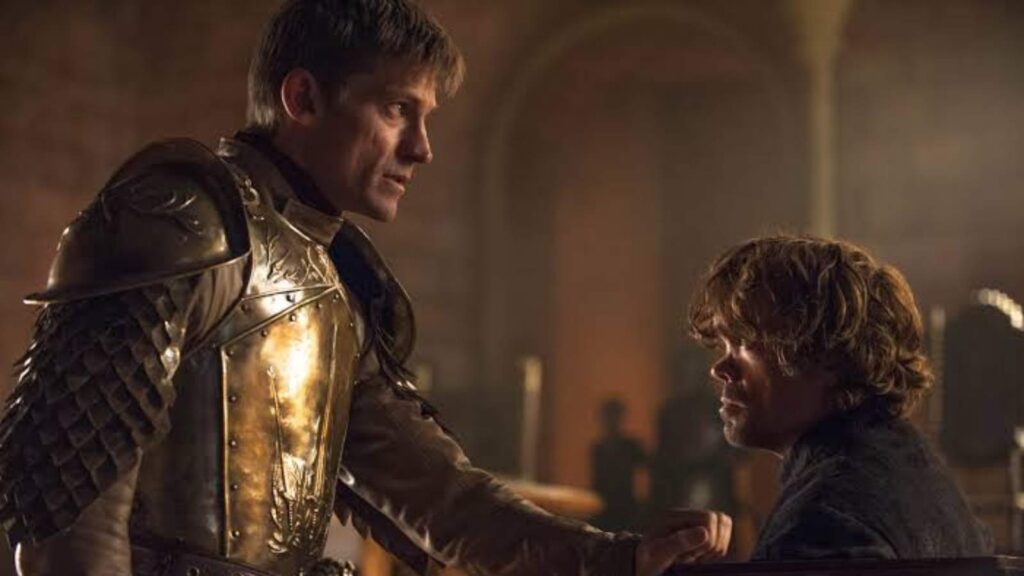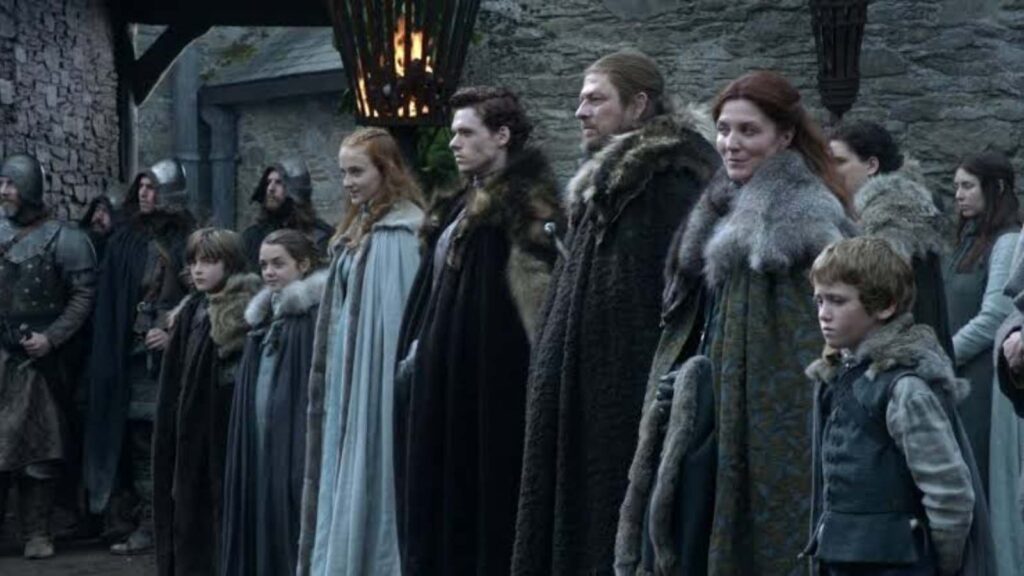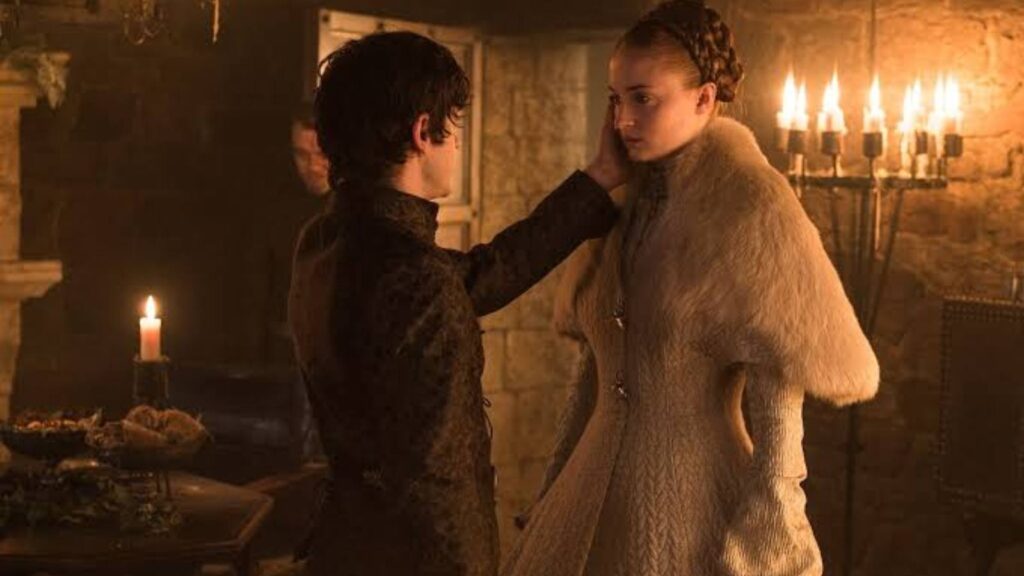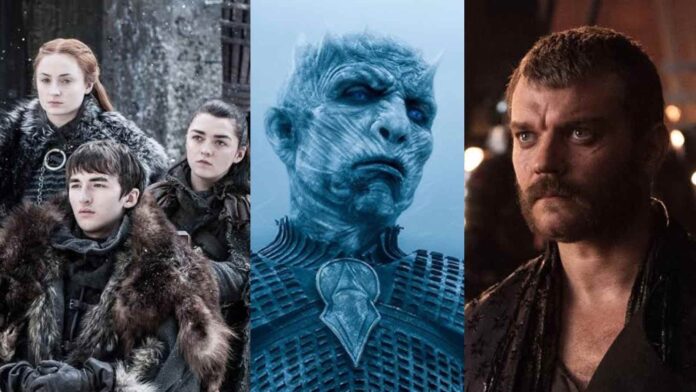When it comes to adapting sprawling epics like George R.R. Martin‘s ‘A Song of Ice and Fire’, changes are inevitable. Additionally, the books are able to delve much deeper into certain aspects that TV shows or films can.
So, HBO’s ‘Game of Thrones’ unsurprisingly altered many aspects of the source material to fit the confines of television. While some deviations added depth to the series, others left fans longing for the complexity of Martin’s original work. Here are the ten biggest changes ‘Game of Thrones’ made from the books.
10. Tyrion, Tysha, And Jaime’s Story

In the books, Tyrion‘s escape from King’s Landing is far more emotionally charged. Jamie in a moment of guilt confesses to Tyrion that his first love Tysha wasn’t a sex worker. Moreover, he explained to Tyrion that Tywin made that up.
Tysha was simply a peasant girl who genuinely loved him. This revelation shatters the bond between the brothers. Additionally, Tyrion’s heartbreak and rage lead him not only to murder Tywin but also to strike out at Jaime.
While in the show Tyrion and Jamie remain close till the very end looking out for each other, it’s not the same in the books. Without any remaining love for his family, Tyrion might have approached Daenerys’s invasion of King’s Landing much differently, leading to an entirely different fate for Westeros.
9. The Stark Children Were Skinchangers

Bran Stark isn’t the only one with magical abilities in the booms. All of the Stark children have the ability to skinchange or inhabit the bodies of their direwolves. The show portrays the direwolves as pets.
However, this skinchanging element adds layers to their characters and connects them to the ancient magic of the North. While Bran dominates the screen with his warging powers, the show sadly omits this crucial aspect of the Stark children’s identities.
8. Daenerys’ Visions In The House Of The Undying

In the books, Daenerys Targaryen‘s visit to the House of the Undying is a pivotal moment filled with cryptic visions. Additionally, these visions are similar to Daemon Targaryen’s vision in ‘House of the Dragon.’ They foreshadow key events in the series.
Instead of getting saved by the fiery rescue of her dragons, the book version shows Dany experiencing profound and prophetic visions. Her vision included the infamous image of a blue flower growing out of ice, which many fans believe symbolizes Jon Snow’s Targaryen lineage. Moreover, these mystical insights deepen her understanding of her destiny and hint at the larger conflict between ice and fire.
7. Rapid Aging Of The Starks

One of the more practical changes ‘Game of Thrones’ made was aging up the characters. In the books, the Stark children are far younger than their on-screen counterparts, with the eldest, Robb, only fifteen years old at the start of the story.
Ned and Catelyn are in their thirties. This was clearly not the case in ‘Game of Thrones.’ Aging up the characters made sense for production purposes. However, it did impact the story. Much of the tragedy in ‘A Song of Ice and Fire’ comes from the fact that these are very young people thrust into impossibly adult situations.
Robb Stark is a scared boy who relies heavily on his mother’s guidance in the books. However, in the show, he is a fierce and seasoned warrior. Moreover, while the show’s older cast works well, the raw vulnerability of their youth is somewhat lost.
6. Arya And Tywin

One of the most beloved deviations from the books is the unlikely pairing of Arya Stark and Tywin Lannister Harrenhal. In the books, the two never meet. However, their scenes together in the show offer some of the most compelling dialogue and character moments.
Watching little Arya clash with the ever-powerful Tywin gave viewers a glimpse of the humanity behind Tywin’s ruthless exterior. Moreover, this change did not alter the larger plot and only added depth to both characters.
In case you missed it: 7 Things ‘Game Of Thrones’ Did Better Than ‘House Of The Dragon’
5. The Dorne Plotline

Dorne’s storyline is one of the most criticized aspects of ‘Game of Thrones’. While the show gave us Pedro Pascal’s unforgettable portrayal of Oberyn Martell, it failed to capture the political intrigue and richness of Dorne from the books.
The omission of Arianne Martell, the daughter of Prince Doran, is a major loss. Arianne is the heir to Dorne, with a scheme to make Myrcella sit on the Iron Throne. Moreover, the Sand Snakes in general are reduced to caricatures in the show. By simplifying Dorne’s role, the show missed out on a significant part of the larger conflict within Westeros.
4. Robb Stark Didn’t Marry For Love And Chose Honor Over Passion

In the show, Robb Stark’s marriage to Talisa Maegyr is portrayed as a passionate love affair. It was also one of the reasons behind his downfall. However, in the books, Robb’s decision to marry is driven by honor, not love.
After being comforted by Jeyne Westerling following the news of his brothers’ deaths, Robb feels compelled to marry her to protect her honor. The show’s portrayal of Robb’s marriage shifts the focus from a story of honor to one of romantic folly. Moreover, this resulted in a significantly different path.
3. Euron Greyjoy

In the books, Euron is a terrifying figure with a penchant for sadism and a mastery of manipulation. He is a far cry from his show counterpart. He wields a magical horn that is said to control dragons. Additionally, he wishes to sit on the Iron Throne himself.
In contrast, the show’s Euron is more of a chaotic pirate. He lacked the depth that made him very powerful in the books. Moreover, this simplification diminished Euron’s role as a significant threat to the other players in the Game of Thrones.
2. Sansa And Ramsay’s Marriage

Perhaps the most controversial change the show made was Sansa Stark’s marriage to Ramsay Bolton. In the book, Ramsay marries Jeyne Poole. Jeyne is a childhood friend of Sansa’s who is passed off as Arya Stark for political reasons.
Sansa, meanwhile, remains in the Eyrie, learning the art of manipulation from Littlefinger. So, by having Sansa endure Ramsay’s cruelty, the showrunners intended to emphasize her resilience and growth. However, this choice has been widely criticized for exploiting her character through unnecessary sexual violence, when her journey to independence was already well on its way in the books.
1. The Night King

One of the most significant changes from the books is the creation of the Night King, the leader of the White Walkers (or Others, as they are called in the books). In Martin’s universe, the Others are a mysterious, terrifying force without a clear leader.
The addition of the Night King in the show provides a focal point for the battle between the living and the dead. However, it also simplified the existential threat that the Others represent. In the books, the others are invincible and cannot be killed with a single stab by a Valyrian steel dagger.
The addition of Night King which could’ve made the walker even more powerful did the opposite. Additionally, the Night King’s death resulting in the end of the Walkers was one of the most disappointing moments of the show.
You might like to read:





